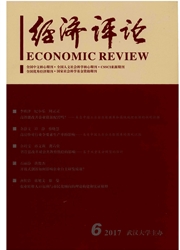

 中文摘要:
中文摘要:
本文从持续性通货膨胀和普遍性通货膨胀等核心通货膨胀的基本理念出发,提出评价核心通货膨胀的关键之处在于检验一个核心通货膨胀度量方法能否有效、彻底地剔除标题通货膨胀中由暂时性冲击或部门特有冲击导致的价格变化,进而提出从基本统计性质、核心通货膨胀是标题通货膨胀的吸引子、标题通货膨胀不是核心通货膨胀的吸引子等三个角度评价核心通货膨胀。本文采用中国的居民消费价格指数及其八大分类价格指数的历史数据对十二种常用的核心通货膨胀度量进行了有效性检验,发现SVAR方法和加权中位数法是比较有效的核心通货膨胀度量方法,其原因在于这两种方法能够有效地识别哪些价格变化应该引起货币政策的反应、哪些价格变化不应该引起货币政策的反应。
 英文摘要:
英文摘要:
Based on the fundamental idea of persistent inflation definition and generalized definition of core inflation, this article proposes that the key of evaluating core inflation measures is to test whether the core inflation measures can eliminate price movements induced by temporary or sector - specific shocks effectively and completely. Then we propose to evaluate core inflation measures from the following three aspects: basic statistical qualities, core inflation is an attractor of headline inflation and headline inflation is not an attractor of core inflation. We use Chinese CPI data to test the effectiveness of twelve popular measures of core inflation and find SVAR method and weighted median method are more effective because they can effectively identify which price movements monetary policy should respond to and which ones monetary policy shouldn't respond to.
 同期刊论文项目
同期刊论文项目
 同项目期刊论文
同项目期刊论文
 期刊信息
期刊信息
